The Galapagos Islands are a small archipelago of islands belonging to Ecuador in the eastern Pacific Ocean. The islands are quite remote and isolated, lying some 1000 km (620 miles) west of the South American continent. The Galapagos archipelago consists of 13 main islands and 6 smaller isles, which together embrace some 50,000 km2 (19,500 sq mi) of ocean.
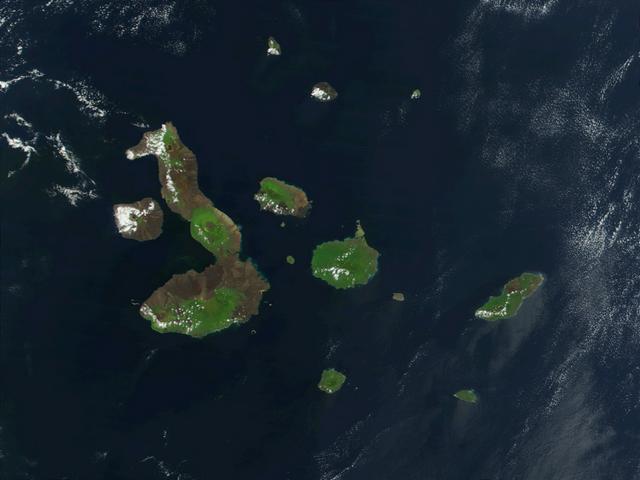
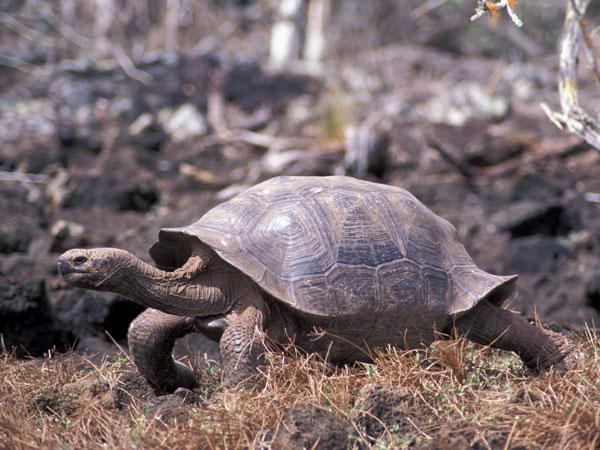
The Galápagos archipelago is world-renowned for its unique and fearless wildlife, much of which was inspiration for Charles Darwin's theory of natural selection. The islands are therefore very popular amongst natural historians, both professional and amateur. Giant tortoises, sea lions, penguins, marine iguanas and different bird species can all be seen and approached. The landscape of the islands is relatively barren and volcanic, but beautiful nonetheless. The highest mountain amongst the islands is Volcán Wolf on Isla Isabela, 1707m high.
The Galápagos are an expensive and time-consuming destination, due to remoteness and need to use boats for travel within the archipelago. A tour of the main attractions takes over a week of a ship-based cruise, and getting to and from the Galápagos takes two travel days from most of the world (often with one day in mainland Ecuador, especially on the way in). Given the travel time, a week-long cruise (8 days/7 nights in the Galápagos) is a good sweet spot, which covers most, but not all, of the main attractions (cruises can visit 2 out of 3 of north/south/west islands in a week). Longer visits cover all main attractions, and 2 weeks is plenty, but is quite long and expensive. Shorter visits (5 days/4 nights) or land-based visits are cheaper but quite limited, and risk being disappointing; if time or budget allow, consider longer. It is hard to visit (including travel) for under USD $1000/1 week per person, and $2000/1.5 weeks is a more reasonable minimum, and $4000 is a mid-range price.
The Galápagos were claimed by the newly independent Ecuador in 1832, a mere three years before Darwin's visit on the HMS Beagle. During the 19th and early 20th centuries, the islands were inhabited by very few settlers and were used as a penal colony, the last of which closed in 1959 when the islands were declared a national park. The Galapagos were subsequently listed as a World Heritage Site in 1978.
Strict controls on tourist access are maintained in an effort to protect the natural habitats, and all visitors must be accompanied by a national park-certified naturalist tour guide.
The Galapagos Islands have a highly variable climate, as does Ecuador's mainland. There are two seasons in the islands: the hot/rainy season from December to June, and the cooler season from June to November.
In the hot season, from December to June, the humidity is high, and the average temperatures are in the 80s F (26°-30°C). There may be occasional showers, but the days are generally warm and sunny.
In the cooler season, from June to November, you can expect cool winds, occasionally bringing with them a light misty-type drizzle called "garúa." Temperatures average in the 70s °F (20–24°C) during the day and lower at night.
Each month brings unique climate variations and wildlife viewing opportunities. Peak season for naturalist tours is typically December through May when the seas are the calmest and the weather the warmest. However summer months June, July and August are also very popular as the animals are more active. September through November is typically low season when most boats will leave the islands for dry dock. For divers peak season is from July to November, when whale sharks can be found at Wolf & Darwin.
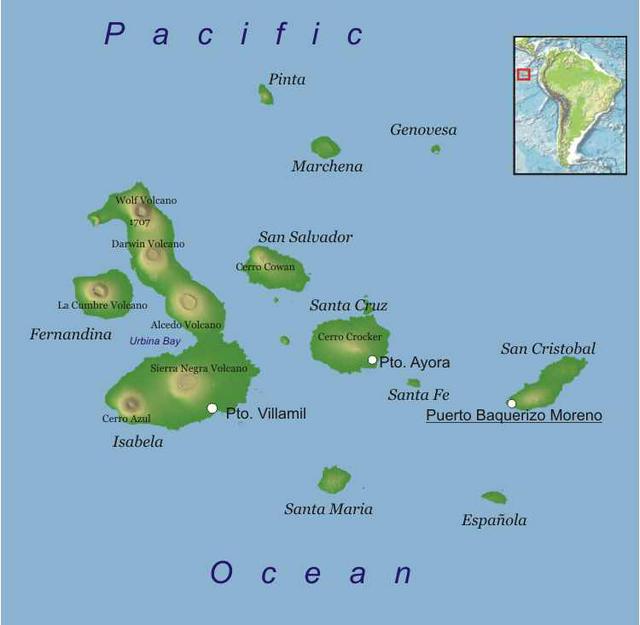

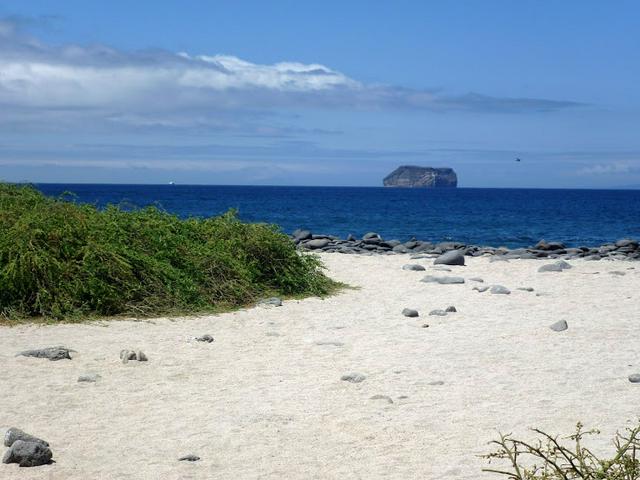
- Baltra – an airport, Seymour Airport , and military base
- Bartolome
- Darwin & Wolf
- Espanola
- Fernandina
- Floreana
- Genovesa
- Isabela – the largest island
- Marchena
- North Seymour
- Pinta – The most famous resident was Lonesome George, a tortoise found on the island that was believed to be the last of his subspecies. Lonesome George was moved to the Darwin Research Centre on Santa Cruz in the hopes that a mate might be found, but sadly the subspecies died with him in 2012. Tourists are not allowed to visit Pinta; it is only open to scientists.
- Pinzon – also known as Duncan Island
- Rabida
- San Cristobal – another commercial airport, San Cristobal Airport
- Santa Cruz – the main island and population centre
- Santa Fe
- Santiago
- South Plaza
[[Isabela (Ecuador)|Isabela]] – the largest island
- Puerto Villamil.
[[San Cristobal (Galapagos)|San Cristobal]] – another commercial airport, San Cristobal Airport
- Puerto Baquerizo Moreno.
[[Santa Cruz (Galapagos)|Santa Cruz]] – the main island and population centre
- Puerto Ayora.
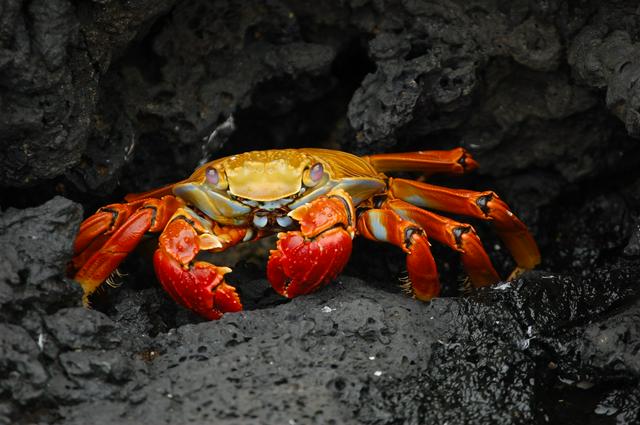
 At many national park locations and all uninhabited islands, the number of visitors are limited, and there are only a few official landing and visitor sites. You must follow the instructions of your guide to protect the wildlife and you are not allowed off the marked paths. This is not a problem as the animals are so tame they will sit right on the path or cross it without caring about mere tourists.
At many national park locations and all uninhabited islands, the number of visitors are limited, and there are only a few official landing and visitor sites. You must follow the instructions of your guide to protect the wildlife and you are not allowed off the marked paths. This is not a problem as the animals are so tame they will sit right on the path or cross it without caring about mere tourists.
The Charles Darwin Foundation administers several research stations throughout the islands, including a large station in Puerto Ayora that is worth visiting for its animal and natural history exhibits, the Galapagos Interpretation Center in Puerto Baquerizo Moreno and the Tortoise Breeding Center are the most interesting of the breeding centers in Puerto Villamil.
Cruises are the only option to see the majority of remote islands. All cruise ships are required to have a certified naturalist guide. Each cruise ships has a fixed itinerary for the year which is set by the Galapagos National Park, with the purpose being to control the number of tourists arriving at any time on each island. Cruises are available in 2-, 4-, 5-, 8- and 15-day options. The following is a list of typical sights:
- Climb the hill on Bartolome for the classic Galapagos view
- Visit the Giant Tortoise breeding and rearing program at the Charles Darwin Research Center on Santa Cruz.
- See the red neck sacks of the Magnificent Frigatebird on North Seymour or El Junco, San Cristobal.
- Visit unique and color species like the Galapagos penguins on Isabela or Floreana.
- Go snorkeling with sea lions and pacific sea turtles as often as possible.
Visit the Giant Tortoise breeding and rearing program at the Charles Darwin Research Center on [[Santa Cruz (Galapagos)|Santa Cruz]].
See the red neck sacks of the Magnificent Frigatebird on North Seymour or El Junco, [[San Cristobal (Galapagos)|San Cristobal]].
Visit unique and color species like the Galapagos penguins on [[Isabela (Ecuador)|Isabela]] or [[Floreana]].
Go snorkeling with sea lions and pacific sea turtles as often as possible.
Snorkeling and diving are very popular activities as the sea life is so rich and colourful.
Snorkeling equipment should be available from your tour operator (but check first) if you don't have your own. You may also want to bring a waterproof camera. Remember to wear at least a T-shirt and sunblock if you are snorkeling, as it's all too easy to get sunburnt in the strong sun. Snorkeling offers a way to be in the water with fish, sea turtles, sea lions, and other creatures and is a great option for those who don't have scuba certification. The islands that are older (further to the west) often have cold temperatures. Wetsuits can be rented at the same locations as snorkeling equipment.
Diving in the Galapagos is incredible, as noted by Rodale's Scuba Diving Magazine. Darwin and Wolf Islands have been ranked as the best dive destination in the world for several years in the categories of healthiest marine environment, best big animal dive and best advanced diving. That said, the Galapagos is not necessarily the right place for beginners or novices. Currents, surge, cold water, and sometimes poor visibility and depths make this a challenge. Certification courses are available in both Santa Cruz and San Cristobal for those looking to learn, and there are several dive sites that are relatively beginner-friendly.
There are 2 ways to dive in the Galapagos Islands:
- Daily dives with a local tour operator from Santa Cruz, Isabela and San Cristobal.
- Galapagos liveaboards. Only liveaboards reach Darwin and Wolf. These 2 sites are the reason most divers come to Galapagos.
Two of the world's premier diving destinations, Darwin Island and Wolf Island, are accessible only via live-aboard cruises. These islands present challenging currents and are not suitable for beginners, but offer amazing opportunities to see huge schools of hammerhead sharks, Galapagos sharks, Silky sharks and whale sharks in season (July-Nov), in addition to other pelagic life like giant mantas, eagle rays, sting rays, huge schools of jack and tuna, sea turtles, sea lions and more.
Park regulations may change unexpectedly; in 2007, many divers were caught unaware as the National Park withdrew diving permits from quite a few cruise ships without notice, leaving many divers without dive cruises they had booked far in advance. For this reason, travellers are advised to get the most up-to-date information possible when planning a dive trip to the Galapagos Islands. In 2010, the National Park began regulating land-based diving, and few of the many shops operating had the necessary permits. It is best to ask if an operator has a dive permit, otherwise you may be turned back by Park Rangers and not permitted to dive. In 2011, the National Park stopped allowing dive live-aboards to offer land visits, except for the Highlands of Santa Cruz, which is on all itineraries.
You can fish in the Reserve, for marlin, tuna, wahoo and many other species but only if you are using an operator and boat that have the requisite Artisanal Vivencial Fishing licences issued by the Galapagos National Park. "Sport Fishing", as such, is prohibited. The Galapagos National Park publishes a list of Vivencial Fishing licence-holders and their boats, but they do not keep the list up to date.
When Vivencial Fishing, you can keep a limited quantity of fish for personal consumption but all marlin must be released unharmed.
Vivencial Fishing was conceived with the purpose of providing local fishermen with an ecologically sustainable alternative to commercial fishing. However, there is constant pressure, both political and commercial, to legalize sport fishing and open the market to better financed and better connected outsiders.
Hiking is often included as part of organized cruises or tours of the highlands. Although you will often see fewer animals during these tours, you will often gain a greater understanding of the difference in terrain and vegetation as well as the formation of the islands. Hiking is restricted in all National Park land; however, several sights, like the Wall of Tears on Isabela and Cerro Tijeras on San Cristobal can be hiked independently. The rules are that a guide must accompany all groups of more than eight people in the National Park.
Biking provides quicker access to far sites from the ports. Bike rentals are available on Isabela, San Cristobal and Santa Cruz for around $15 per day.
The Galapagos provides some good waves and many locals make it a daily activity. Boards can be rented by the day or month at port towns. In general sites are marked with a place to rest surf boards as to not damage the land. The following are beaches that allow surfing:
- Punta Carola, San Cristobal
- La Loberia, San Cristobal
- Tongo Reef, San Cristobal
- Tortuga Bay, Santa Cruz
- Playa Ratonera, Santa Cruz
- Isabela has a more continuous sandy shoreline that provides open surfing, larger waves are at the end of the road that follows the beach in the opposite side of the port
- The Galapagos Surf Co. The only surf travel company in the Galapagos. Waves are available not only in San Cristobal with north swell, but also in Santa Cruz and Isabela islands as well.
The Galapagos Surf Co. The only surf travel company in the Galapagos. Waves are available not only in San Cristobal with north swell, but also in Santa Cruz and Isabela islands as well.
To minimize the impact of sightseeing on the unique ecosystem and mitigate issues with introduced species, several organizations provide conservation-based volunteering.
- Hacienda Tranquila works on environmental, community and social issues. Volunteers stay on the grounds and cook for themselves. The hacienda is owned and managed by locals.
- Hacienda Esperanza works to conserve the environment and promote sustainable technologies. Volunteers are provided room and board as part of volunteering. The hacienda is owned and managed by locals.
- Jatun Sachu works to conserve the Galapagos and covers a larger area. Volunteers are provided room and board as part of volunteering.
- Fundacion Bolivar Education has a conservation farm project on San Cristobal, as well as a habitat restoration project. Teaching programs in the islands include Alejandro Alvear School and Teaching Support at a local school.
Kayaking allows you to navigate more of the water without a boat. Kayaks can be rented at Tortuga Bay in Santa Cruz and the port at San Cristobal to navigate the nearby beaches. Fish and sea turtles can often be seen while kayaking; however, conditions should be checked before renting.
Horseback riding can be organized to allow you to see the highlands in greater detail. Tours are roughly $50. Additional tours may be found through taxis or local tour agencies.
In general, crime is not a problem in the Galapagos. Petty crime may occur in the towns, and occasionally fisherman will stage strikes or demonstrations that affect tourists, but for the most part there is little to be concerned about. Some items that have been reported missing have been found in the crews' quarters. As most boats do not have lockable cabins, it might be advisable to keep your items locked away in bags in your cabins.
The animal life in the islands is mostly docile with the exception of larger sea lions. Bulls, in particular, will vigorously protect their harems, and can inflict dangerous and potentially deadly bites. Do not snorkel close to sea lion colonies. If a bull sea lion approaches you, swim away from the nearest colony. While the bulls can be dangerous; swimming with juvenile sea lions can be one of the most exciting parts of a trip.
In addition to sea lions, there is a minimal danger from sharks. In general sharks will not attack unless provoked, although attacks can sometimes occur in murky water when sharks mistake humans for other animals. However, by exercising common sense, experiences will be almost always be positive.
Be careful with the tap water, especially in Puerto Ayora. It is not recommended to drink it or brush your teeth with it.
One notable place to put (non-important) mail is in the barrel at Post Office Bay. Mail will stay there until another traveler from your area picks it up. It's a great way to meet new people that have been to the Galápagos, since most of the mail there is addressed to the sender.
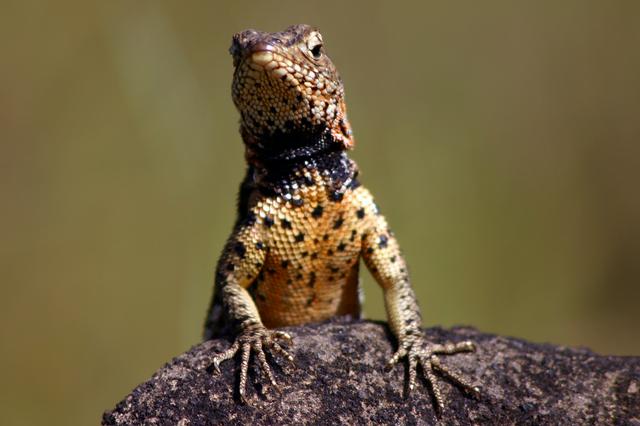 The park is strictly regulated. Outside of the towns visitors must be accompanied by guides, and visitors are only allowed on land from sunrise until sunset. Itineraries must be registered with the park prior to embarking on a trip, and animals should never be disturbed; while the wildlife in the Galapagos will usually ignore your presence, a general rule of thumb is that if an animal notices your presence, then you are too close. Two meters is generally given as a minimum distance to keep away from animals; you will find that if you are calm and respectful that many animals will walk right up to investigate you.
The park is strictly regulated. Outside of the towns visitors must be accompanied by guides, and visitors are only allowed on land from sunrise until sunset. Itineraries must be registered with the park prior to embarking on a trip, and animals should never be disturbed; while the wildlife in the Galapagos will usually ignore your presence, a general rule of thumb is that if an animal notices your presence, then you are too close. Two meters is generally given as a minimum distance to keep away from animals; you will find that if you are calm and respectful that many animals will walk right up to investigate you.
One of the greatest dangers to the islands is introduced species. The park service is trying to eliminate goats, rats, cats, dogs, and introduced plant species on many of the islands, but it is a difficult battle; after evolving for thousands of years without predators, the Galapagos wildlife is not adapted to handle these new species. When traveling to the islands, do not bring any plant or animal life with you, and be sure to always clean your footwear when traveling between islands to avoid accidentally transferring seeds.
Illegal fishing is another threat to the park. Although park officials may deny it, illegal fishing for sharks and sea cucumbers occurs on a massive scale. The number of fishermen has increased rapidly over the last few years, while the number of fish have plunged. Due to ongoing tensions between fisherman, tourism, and science, the level of enforcement of fishing laws can vary greatly, but even when policies are put in place to limit fishing, enforcement is difficult due to the resources required to patrol the vast park area.
Another big threat to the park is the growing population. Although new rules are supposed to make it impossible for people arriving from the mainland to live and work on the islands, the rules are poorly enforced, resulting in many people immigrating from the mainland to make quick money on the islands.
The codified park rules are:
- To visit the National Park you must always be accompanied by a certified Galapagos National Park guide.
- Galapagos is a unique and fragile environment. Take only photographs and video. Professional shooting needs authorization from the National Park.
- Stay within the limits of the walking trails, for your safety and that of the flora and fauna.
- To avoid affecting the wildlife's natural behavior, avoid getting closer than two meters to the animals.
- Camping is allowed only at specific sites. If you wish to camp, you must first obtain a permit from the Galapagos National Park.
- Help conservation by cooperating with the authorities in their inspection, monitoring and control duties. Report any anomalies to the National Park.
- Do not introduce foreign organisms to the islands, as these can have a negative impact on the ecosystem.
- Do not buy souvenirs which are made from black coral, sea shells, sea lion teeth, tortoise shell, volcanic rock or endemic woods.
- Galapagos animals have their own feeding behavior. Never feed the animals. Feeding them can be detrimental to their health.
- Galapagos landscapes are beautiful and unique. Do not spoil them by writing or etching rocks or trees.
- Do not litter while on the islands. Always dispose of rubbish in a safe and appropriate way.
- Smoking or making camp fires in the national park areas is forbidden and can cause devastating fires.
- Fishing is strictly forbidden, except on those boats specifically authorised by the Galapagos National Park.
- Jet skiing, submarines, water skiing, and aerial tourism are all forbidden.
